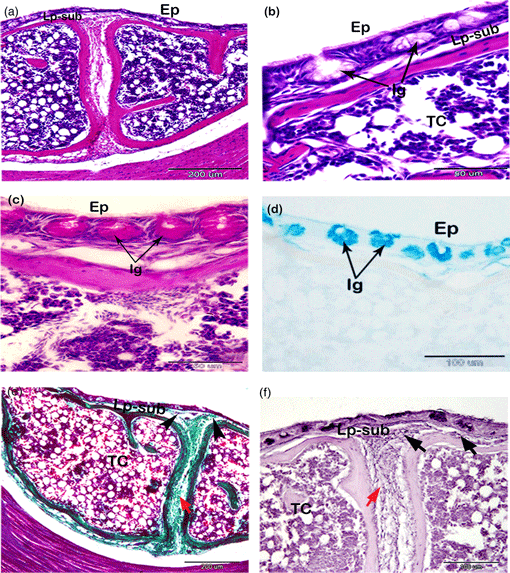Article contents
Anatomical, Histological, and Electron Microscopic Structures of Syrinx in Male Budgerigars (Melopsittacus undulatus)
Published online by Cambridge University Press: 04 November 2020
Abstract

The syrinx is the main source for phonation in birds, its function is analogous to the mammalian larynx. Birds have both a larynx and a syrinx, but they use only the latter to vocalize. The objective of this work to give a detailed description of the anatomical, histological, and ultrastructural of syrinx in male budgerigars as a model of a passerine bird. The syrinx in the current study was to be found as a tracheobronchial type, it consists of cranial (tympanum) part and caudal (bronchosyringeal) part and, additionally, there are lateral vibrating membranes. The tympanum is formed of the last six tracheal rings, histologically its lamina epithelialis is a pseudostratified ciliated columnar epithelium with goblet cells and interrupted by intraepithelial glands. The secretory acini appear oval and lined by pyramidal secretory cells. The lamina propria–submucosa contain numerous blood capillaries, immune cells, and telocytes (TCs). The electron microscopic examination revealed numerous blood capillaries surrounded by fibroblasts and numerous immune cells, including mast cells and wandering leukocytes, within the tympanum mucosa. Hence, this study provides a detailed knowledge about the syrinx in male budgerigars.
- Type
- Micrographia
- Information
- Copyright
- Copyright © Microscopy Society of America 2020
Footnotes
Deceased
References
- 6
- Cited by




